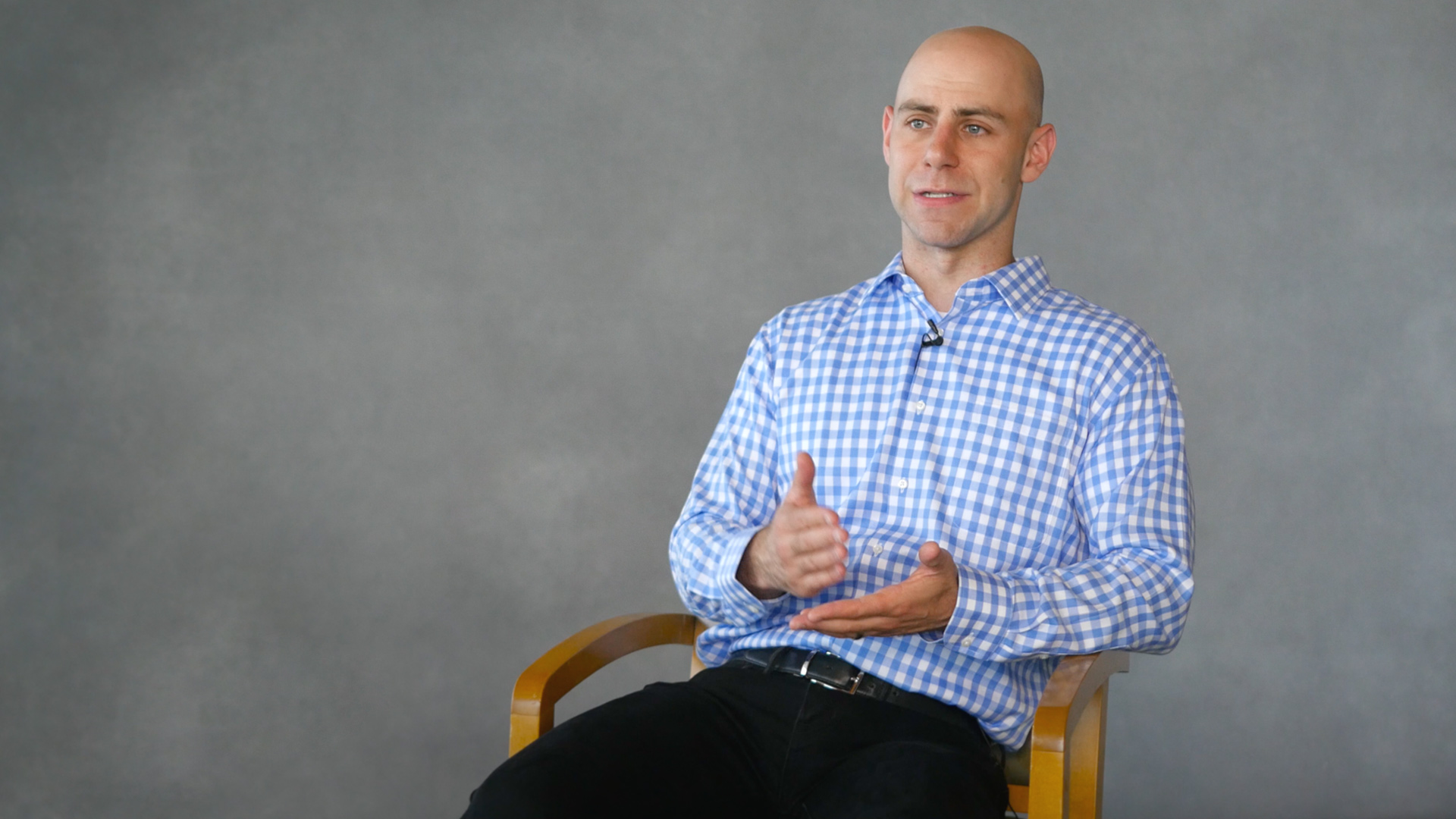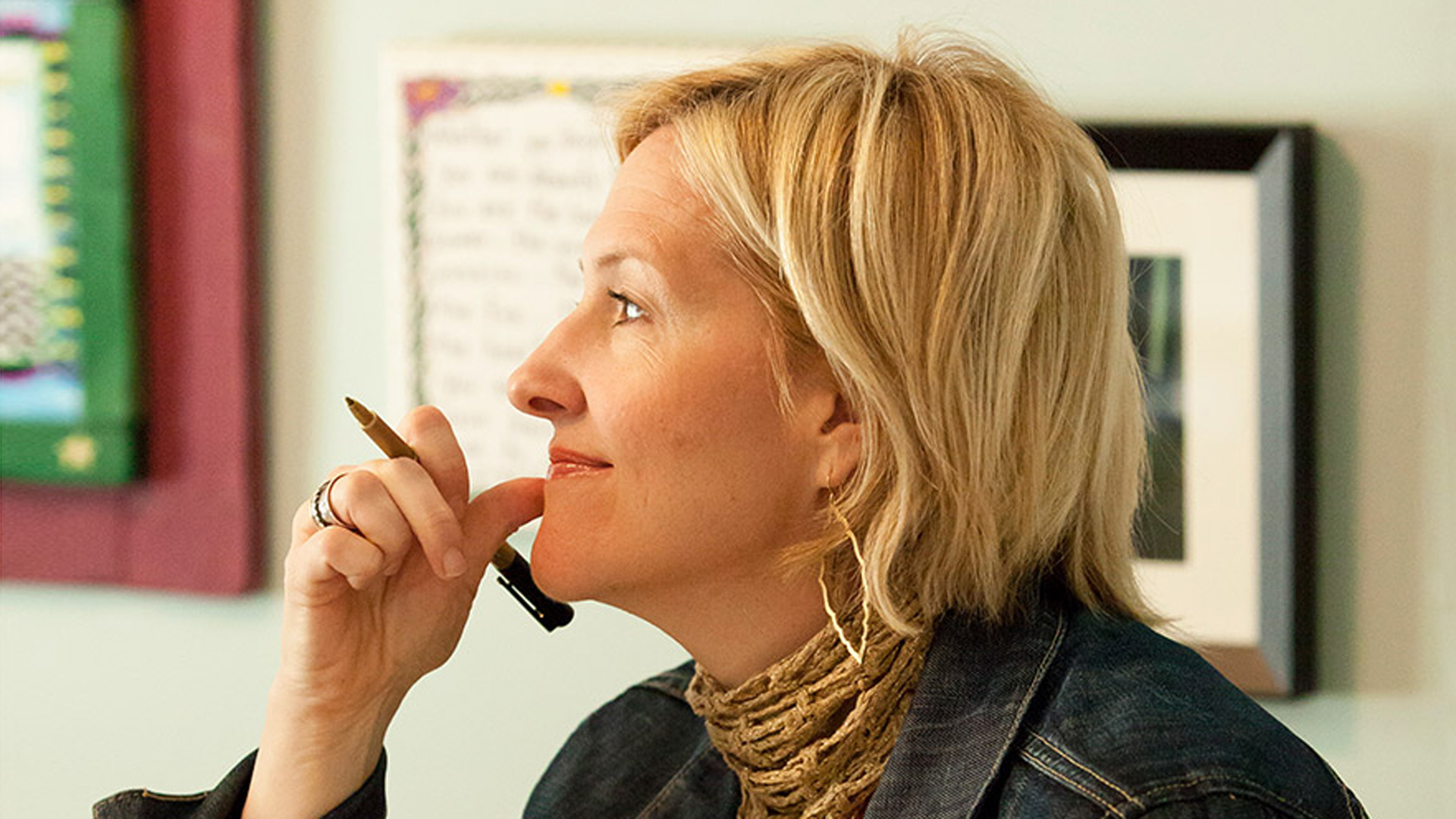
Adam Grant Discusses the Art of Managing Fear
By The Quiet Leadership Institute
On Friday, February 5, Susan Cain hosted a live Facebook Q&A with Adam Grant, author of the newly published, bestselling book Originals: How Non-Conformists Move the World. The wide-ranging conversation touched on such topics as work/life balance, finding allies, and championing originality on the job and at home.
The entire chat was full of valuable information—and it was lengthy! We’ve curated some select highlights from the Q&A around a recurring theme: the challenge of overcoming the fear that can precede taking original action. As a special extra, enjoy a related excerpt from Adam’s new book after the Q&A.
QUESTION FROM HWS: While pursuing the quest of making this book a reality, what was your biggest fear? Now that it is published, what is your greatest source of pride about the effort?
ADAM: I normally get things done early, but while writing a chapter on procrastinating, I decided to try procrastinating. I guess you could call it meta-procrastinating. I literally stopped in mid-sentence one day and put it aside, and didn’t come back to it for six months. I was terrified I wouldn’t finish it in time. It was agony. But it became a great source of pride, because I ended up with all sorts of new ideas that I didn’t initially think to cover on the benefits of waiting, including the myth of the first-mover advantage (most great originals are fashionably late to the party) and the two life cycles of creativity (young geniuses have eureka moments, but often burn out quickly, and it’s never too late to learn to be an old master).
QUESTION FROM VWMD: I am a school teacher and would love to know what you would say if you were to come speak to my class.
ADAM: I would tell them not to let the fear of failure hold them back. Throughout history, just like the rest of us, great originals have been afraid of failing. They’ve just been even more afraid of failing to try. They don’t want to regret inaction; they’re worried that their lives won’t matter, and that motivates them to act. As Jessica Potts Lahey writes, failure can be a gift.
QUESTION FROM SUSAN CAIN: Adam, I would love for you to talk about the role of anxiety in the creative process—and the difference between “strategic optimists” and “defensive pessimists.” Among the many fascinating bits in your book, that one stood out, and will (I think) resonate for this group.
ADAM: About a week before a big presentation, strategic optimists envision it going perfectly, and that energizes them to prepare and ace it. Defensive pessimists have a different approach: they wake up in a cold sweat panicked that they’ll forget all their lines and trip on stage. That anxiety about the worst-case scenario motivates them to prepare, and they perform just as well as optimists… unless you make them happy, which robs them of the anxiety that propels them into action. Even though they give a stellar presentation, the next time around, they convince themselves all over again that they’re going to fail, and that motivates them to succeed. A healthy dose of anxiety about things going poorly is a key part of how many people champion their original ideas and find the courage to take risks.
Originals: How Non-Conformists Move the World
Excerpt from Chapter 8: Rocking the Boat and Keeping It Steady
Don’t Stop Believin’
When ordinary people list their fears, one tends to be more common than death: public speaking. As Jerry Seinfeld jokes, “If you have to go to a funeral, you’re better off in the casket than doing the eulogy.”
If we want to understand how to manage fear, we don’t have to threaten people’s lives; we need only threaten to put them on stage. Alison Wood Brooks, a professor at Harvard Business School, asked college students to deliver a persuasive speech on why they would make good collaborators at work. A critical experimenter sat in the audience, and all the speeches were videotaped. A committee of peers would be enlisted later to evaluate each speaker’s persuasiveness and confidence. With only two minutes to prepare, many of the students were visibly shaking.
If you were in this situation, how would you manage your fear? When Brooks asked three hundred working Americans to offer advice on this matter, the most popular recommendation was “Try to relax and calm down.” This is the most obvious suggestion, favored by more than 90 percent of professionals. Yet it isn’t the best one.
Before the college students gave their speeches, Brooks asked them to speak three words out loud. She randomly assigned them to say either “I am calm” or “I am excited.”
That one word—calm versus excited—was sufficient to significantly alter the quality of their speeches. When students labeled their emotions as excitement, their speeches were rated as 17 percent more persuasive and 15 percent more confident than those of students who branded themselves calm. Reframing fear as excitement also motivated the speakers, boosting the average length of their speeches by 29 percent; they had the courage to spend an extra 37 seconds on stage. In another experiment, when students were nervous before taking a tough math test, they scored 22 percent better if they were told “Try to get excited” instead of “Try to remain calm.”
But is reframing fear as excitement the best way to cope with nerves? To find out whether it’s better to just acknowledge anxiety, Brooks gave students another frightening task: She asked them to sing eighties rock music in public.
Standing in front of a group of peers, students belted out the Journey song “Don’t Stop Believin’” into a microphone. A voice recognition program on the Nintendo Wii automatically scored their performance on an accuracy scale from 0 to 100 percent, assessing volume, pitch, and note duration. They would earn a bonus for high scores. Before they started singing, she randomly assigned the students to say “I am anxious” or “I am excited.”
A control group who said nothing prior to performing averaged an accuracy score of 69 percent. Labeling the emotion as anxiety reduced accuracy to 53 percent. Instead of helping them accept fear, it reinforced that they were afraid. Calling it excitement was enough to spike accuracy to 80 percent.
To overcome fear, why does getting excited work better than trying to calm yourself down? Fear is an intense emotion: You can feel your heart pumping and your blood coursing. In that state, trying to relax is like slamming on the brakes when a car is going 80 miles per hour. The vehicle still has momentum. Rather than trying to suppress a strong emotion, it’s easier to convert it into a different emotion—one that’s equally intense, but propels us to step on the gas.
Physiologically, we have a stop system and a go system. “Your stop system slows you down and makes you cautious and vigilant,” explains Quiet author Susan Cain. “Your go system revs you up and makes you excited.” Instead of hitting the stop switch, we can motivate ourselves to act in the face of fear by pressing the go switch. Fear is marked by uncertainty about the future: We’re worried that something bad will happen. But because the event hasn’t occurred yet, there’s also a possibility, however slim, that the outcome will be positive. We can step on the gas by focusing on the reasons to move forward—the sliver of excitement that we feel about breaking loose and singing our song.
When we’re not yet committed to a particular action, thinking like a defensive pessimist can be hazardous. Since we don’t have our hearts set on charging ahead, envisioning a dismal failure will only activate anxiety, triggering the stop system and slamming our brakes. By looking on the bright side, we’ll activate enthusiasm and turn on the go system.
Excerpted with permission from Adam Grant’s Originals: How Non-Conformists Move the World. Published by Viking, an imprint of Penguin Publishing Group, a division of Penguin Random House LLC. Copyright © 2016 by Adam Grant. Learn more at adamgrant.net.
Enjoy Quiet Revolution’s posts on work, leadership, and temperament? Feel free to reach out and sign up for our Quiet Leadership Institute newsletter—we love to hear from you!








